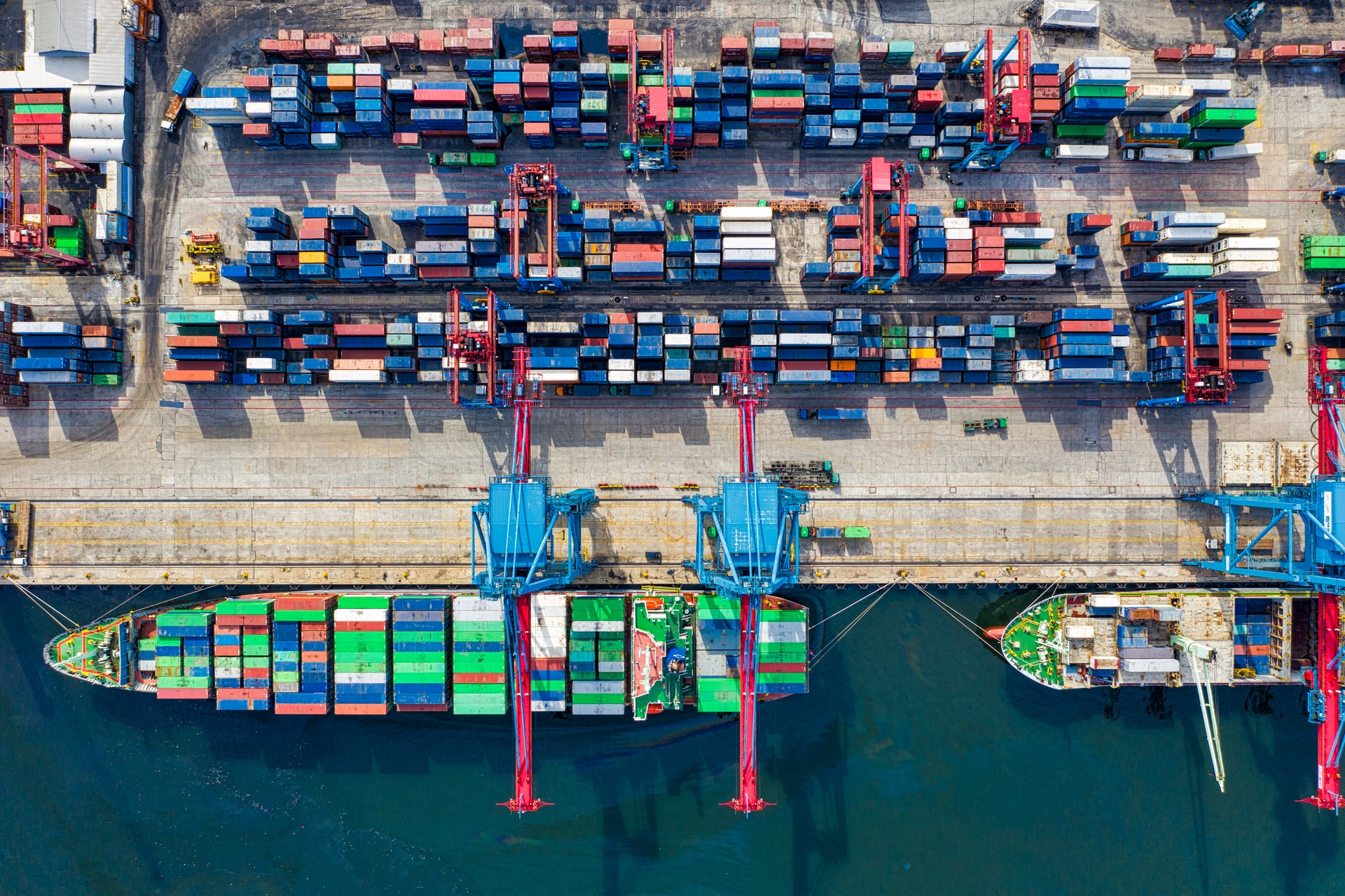
Improve Your Supply Chain Visibility With AI and IoT
April 22, 2021 - Emily Newton
Revolutionized is reader-supported. When you buy through links on our site, we may earn an affiliate commision. Learn more here.
In a global economy, supply chain managers benefit significantly from tech boosting supply chain visibility and streamlining logistics operations. Along with other industry 4.0 technology, artificial intelligence is one of the most powerful tools supply chain managers have in improving visibility. With the right combination of AI platforms and data-collecting technology, businesses can make more informed logistics decisions and manage increasingly interconnected supply chain operations.
The Growing Importance of AI in Supply Chain Management
The use of AI in supply chain management is accelerating rapidly. The COVID-19 crisis may hasten the adoption of AI tech as well.
The growing complexity of global supply chains means shippers and manufacturers face increasing pressure to juggle vast amounts of information from different sources. Simultaneously, they must also coordinate stakeholders and ensure shipped goods are delivered on time. There’s little margin for error.
One of AI’s greatest strengths is its ability to find patterns in massive volumes of data. This pattern-finding ability can help supply chain managers uncover subtle relationships in large datasets. For example, they could determine what outside forces tend to cause seasonal fluctuations in demand for a particular product.
Combined with technology that helps track goods in transit, this means AI can uncover insights that may help businesses improve supply chain visibility.
How the IoT Improves Supply Chain Visibility
COVID-19 exposed how vulnerable global supply chains are to sudden demand shocks. Slowdown in key manufacturing centers, coupled with unprecedented shifts in consumer demand, caused major issues with overstocking and unplanned sellouts.
The crisis made it clearer than ever that the lean supply chain has its limits. This is especially true for critical sectors like the pharmaceutical industry, which has struggled to recover from shortages that arose during the COVID-19 outbreak. Manufacturers and shippers also quickly learned that limited supply chain visibility can have severe implications in a crisis.
Manufacturers and managers preparing for the future want to better understand product demand and movement through the supply chain. This information will help to improve resiliency and generate more accurate forecasts.
Streamlining warehouse operations can help, but manufacturers will still face one major issue. How can supply chain managers know where goods are after they’ve shipped? This challenge may be especially hard to solve for shipments that change hands multiple times before arriving at their final destination.
Artificial intelligence, coupled with a fleet of IoT devices, can be a powerful tool in improving the supply chain transparency. Placing sensors in shipping containers is one example. These devices provide a regular update on the container’s position, as well as additional useful information. They may report environmental conditions and give a manufacturer real-time updates on the temperatures and humidity of a particular shipment.
This information can be extremely valuable in maintaining good shipping conditions. Managers can know exactly where and when an error resulted in improper temperatures in the cold chain.
Gathering Data With Sensors
These sensors may also be used in combination with RFID tags, which can be regularly scanned for by an IoT sensor. This combination of devices can ensure all goods in a particular shipment are accounted for.
Some retailers are also using IoT technology to improve the visibility of delivery fleets. GPS trackers in trucks and other delivery vehicles can offer similar data. They can also provide as well as additional information on fuel consumption, speed and performance.
Professionals can aggregate and analyze shipping information collected over time with the right AI algorithms. This allows shipping management organizations to pick out methods, conditions or companies that may cause issues. This analysis can help supply chain managers better identify risk or determine fault in the event of damage or spoilage.
Improved shipping data can also help suppliers and supply chain managers better estimate demand and how long shipping will take. This can reduce the time a product needs to spend in the warehouse before being moved along the supply chain. It also provides managers and shippers regular updates on their goods’ locations and the conditions they’re under.
Over time, this data can also help logistics managers correlate issues with received goods and shipping conditions. They can improve supply chain visibility and make adjustments to shipping practices that reduce damage and shipping time.
Using AI to Manage Errors
Human error is inevitable in any industry, but it can be particularly punishing in supply chain management. Mistakes made in shipping manifests or during order picking, packing and processing can all have major consequences on an organization’s ability to accurately track inventory.
Inaccurate tracking can easily cause problems with the visibility of goods and lead to under- or overstocking. This can result in inefficiencies in warehousing, delayed orders and a variety of other issues.
In some cases, AI may be able to reduce human error at the source by assisting workers with tedious and error-prone workflows.
For example, embedded computing company ADLink is experimenting with “gamified” AI palletizing technology intended to replace hand scanning of goods. With the company’s platform, the packer moves a box to a pallet. The system uses a combination of AI and cameras that causes a screen to flash red or green depending on whether or not the package is on the correct pallet.
Some businesses, like Amazon and Staples, have also adopted AI-powered warehouse robotics that can completely automate significant portions of the picking and packing process. Similar tech can reduce human error and provide a digital record that may prevent mistakes from making their way into a facility’s data on shipped goods.
Developers of industrial AI solutions have already launched various tools aimed at the supply chain management sector. For example, IBM offers a suite of supply chain technology designed primarily to assist with order management and B2B collaboration.
Challenges for Supply Chain Managers That Adopt AI
Businesses that adopt AI to improve supply chain visibility will likely need to manage some short-term challenges. Any supply chain manager or organization that wants to adopt AI and IoT devices at scale should prepare for a phase-in period where data is collected and workers adjust to the new technology.
Interoperability may also be a challenge. Data collected by IoT fleets or shipping partners might require processing before a business’s AI solution can analyze it. All systems must work together to supply the required information and do so accurately.
Future Possibilities for AI in Supply Chain Management
Businesses are pivoting to AI to solve some of the most pressing challenges in supply chain management. This includes both resiliency and supply chain visibility. These tools are already reshaping how companies approach supply chain management by encouraging the use of IoT-powered shipment monitoring and AI analysis of shipping data.
Further applications of AI — like robots and palletizing optimization tools — may help to encourage further adoption. This would make AI even more essential for effective logistics operations. Companies that do not use these tools in their operations will likely see themselves fall behind their competitors and struggle to maintain market share. An investment in AI and IoT will pave the path forward and help ensure success.
Revolutionized is reader-supported. When you buy through links on our site, we may earn an affiliate commision. Learn more here.
Author
Emily Newton
Emily Newton is a technology and industrial journalist and the Editor in Chief of Revolutionized. She manages the sites publishing schedule, SEO optimization and content strategy. Emily enjoys writing and researching articles about how technology is changing every industry. When she isn't working, Emily enjoys playing video games or curling up with a good book.




